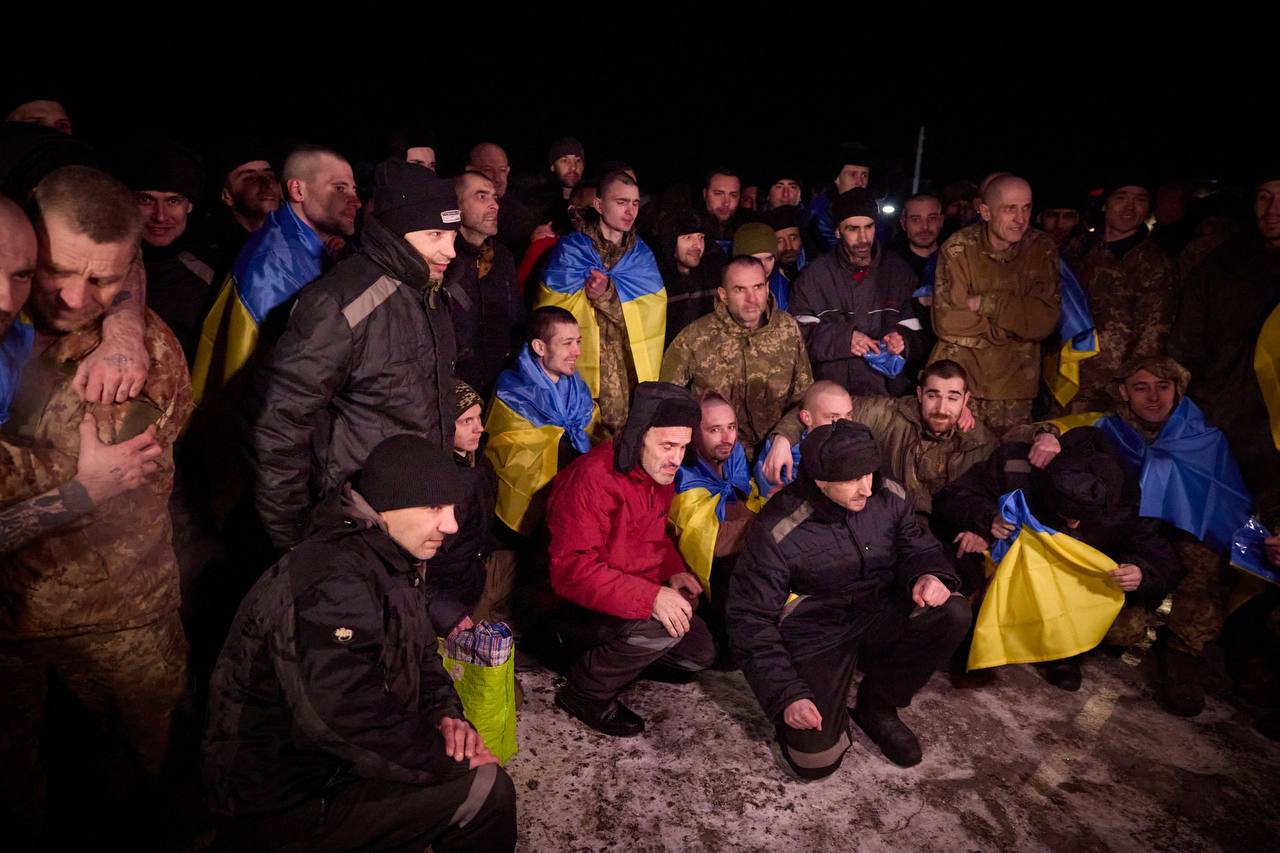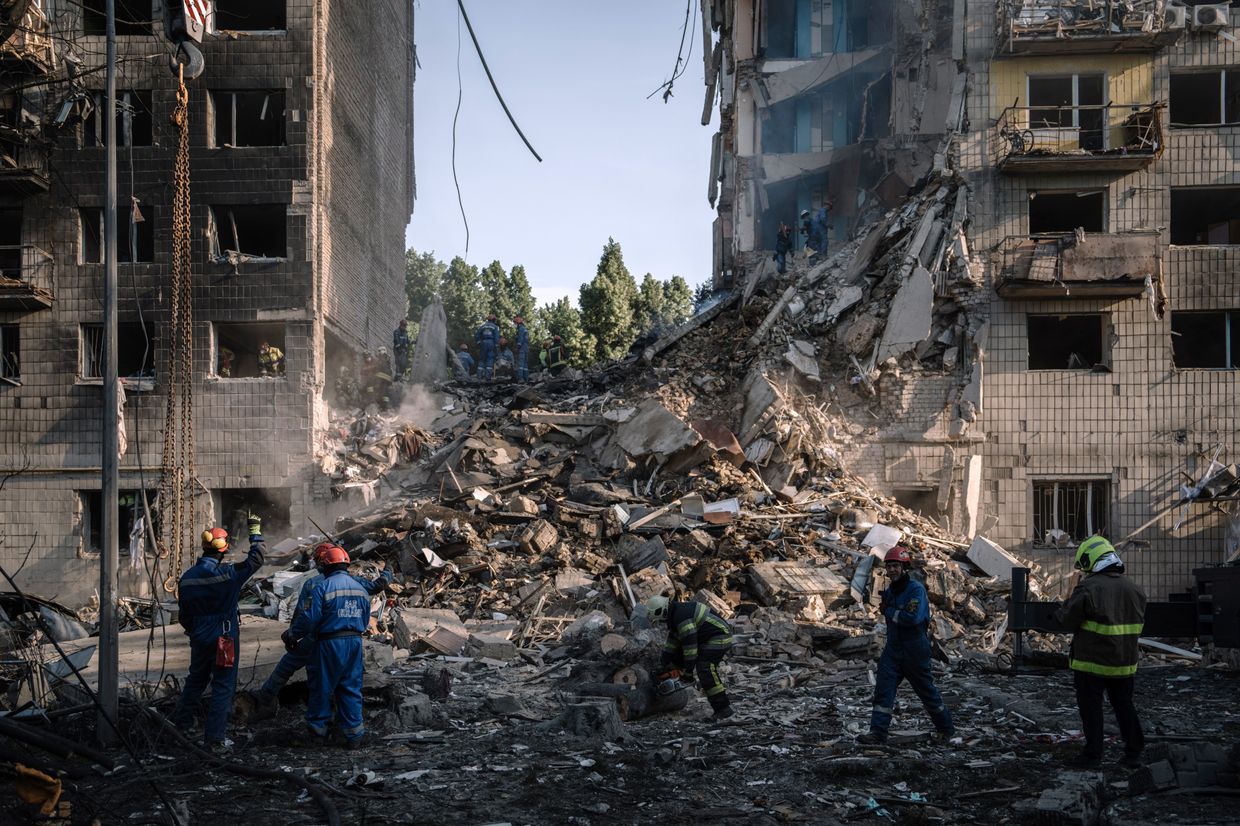Key developments on Jan. 3:
- 230 Ukrainians, POWs and civilians, return home from Russian captivity in largest prisoner exchange since start of full-scale war
- NATO-Ukraine Council to hold emergency meeting in response to Russia's mass strikes on Ukraine, Kuleba says
- NATO agrees on deal to buy 1,000 Patriot missiles for coalition members
- PM Shmyhal says Ukraine plans sixfold increase in military production this year
Ukraine returned home 230 POWs and civilians, the Coordination Headquarters for the Treatment of the Prisoners of War reported on Jan. 3.
It marks Ukraine's largest prisoner exchange since the start of the full-scale war.
The previous prisoner swap between Ukraine and Russia took place in August. After that, Russia refused to exchange prisoners in an alleged effort to turn Ukrainian families of POWs against the country's authorities, according to Ukrainian officials.
On Telegram, Ombudsman Dmytro Lubinets wrote that it was a "very difficult return (of POWs)."
Among the returned Ukrainians are personnel from Ukraine's Armed Forces, Territorial Defense Forces, National Guard, border guards, and a police officer, as well as six civilians, the headquarters said.
"These are the defenders of the Azovstal steel plant, Snake Island, and the Chornobyl Nuclear Power Plant. Among them a combat medic… Many soldiers were captured on the first day of the (full-scale) war," Lubinets wrote.
It is the 49th prisoner swap conducted after Russia launched its all-out war, bringing the total number of freed defenders to 2,828, according to Lubenets.
Among those returned were those who had the official POW status, confirmed through the International Committee of the Red Cross, and those Ukrainian personnel who were considered missing.

Most returned POWs are privates and sergeants. Five women were freed during this prisoner swap, according to the headquarters. One of them is a combat medic from Ukraine's 36th Marine Brigade.
"Halyna Fedyshyn is at home, the last female marine who was in captivity! She went through the difficult defense of Mariupol, the Ilyich Steel Plant, Azovstal, and the hellish captivity," Serhiy Volynskyi, acting commander of the 36th Separate Marine Brigade, wrote on Instagram.
"While in captivity, she spoke Ukrainian on principle. The Russians took her away several times as if for exchange, but eventually returned her to the place of detention," reads the headquarters' post.
The headquarters also thanked the United Arab Emirates for its "active participation in carrying out this exchange."
During his evening address on Jan. 3, President Volodymyr Zelensky said that even though there was "a long pause in the exchanges," there was no pause in the negotiations regarding them.
"We seize every opportunity and try all mediation options," he said. "At every international meeting that can help the cause, we raise the issue of returning our captives. And we will continue this work to return all our people."
"The more Russians we take prisoner, the more effective the negotiations on exchanges will be," Zelensky said.

NATO emergency meeting
On Jan. 3, Foreign Minister Dmytro Kuleba said that NATO had approved Kyiv's request to hold an emergency meeting of the Ukraine-NATO Council in response to Russia's recent mass missile and drone attacks.
On Dec. 29 and Jan. 2, Russia launched large-scale attacks against Ukraine, using drones and missiles of various types, killing dozens of people and injuring hundreds.
On X, Kuleba wrote that "one of the key topics of the council's upcoming emergency meeting will be strengthening Ukraine's air defense." He also called NATO's agreement to hold the meeting "an important sign of Euro-Atlantic unity in the face of Russian terror escalation."
However, Kuleba did not provide details on when and where the meeting would occur.
NATO established the council during the Vilnius summit in July as part of the efforts to enable closer coordination between Kyiv and the alliance.
Also, on Jan. 3, NATO's Support and Procurement Agency (NSPA) announced a deal for the purchase of 1,000 Patriot air defense missiles for coalition members, including Germany, the Netherlands, Romania, and Spain.
The contract includes all the relevant components and spare parts and stems from a joint venture between NSPA and COMLOG, which is itself split between the arms manufacturer MDBA Germany and Raytheon, one of the largest U.S. defense contractors.
According to the statement, the deal will also necessitate the expansion of arms manufacturing capabilities in Europe, including the opening of a production facility for Patriot missiles in Germany.
"This investment shows the strength of transatlantic defense cooperation and NATO's commitment to keeping our people safe," NATO Secretary General Jens Stoltenberg said in a statement following the announcement.
"Russian missile and drone attacks on Ukrainian civilians, cities, and towns show how important modern air defenses are. Scaling-up ammunition production is key for Ukraine's security and for ours."
Ukraine received its first Patriot systems in April 2023 and soon after proved their effectiveness by downing air-launched ballistic Kinzhal missiles.

Ukraine plans sixfold increase in military production in 2024
As Ukraine braces for another year of war, Prime Minister Denys Shmyhal said on Jan. 3 that one of the country's key goals for 2024 is to increase the defense industry production capacity six times.
"This means more drones, more shells, more ammunition, and armored vehicles for our military," Shmyhal wrote on Telegram.
Ukrainian officials have previously vowed to ramp up domestic arms manufacturing while aid from major allies like the U.S. and the EU is being stalled.
According to Shmyhal, the government intends to spend over Hr 750 billion ($19.69 billion) on military personnel payments and over Hr 265 billion ($6.96 billion) for the purchase, production, and repairs of weaponry.
He also said that the Ukrainian defense industry's capacities tripled during the previous year.
Deputy Defense Minister Ivan Havryliuk has also revealed that the manufacturing of missiles and other arms is expected to increase several times this year.
Zelensky said earlier that Ukraine plans to produce 1 million drones in 2024, recognizing the importance of this weaponry on Ukrainian battlefields.

Death toll of Russia's Dec. 29 attack on Kyiv rises to 30
A person died in the hospital on Jan. 3, bringing the death toll of the Russian Dec. 29 attack on Kyiv to 30, the Kyiv City Military Administration reported.
Russia launched the largest drone and missile attack against multiple regions of Ukraine on Dec. 29, killing over 50 people and wounding over 160. Some 29 people were injured in the capital alone.
Ukrainian air defense downed 114 of the 158 Russian missiles and drones launched at the country, according to the Air Force.
Moscow began intensifying its attacks against Ukraine's cities and critical infrastructure as the temperatures dropped, echoing its strategy from last year.














